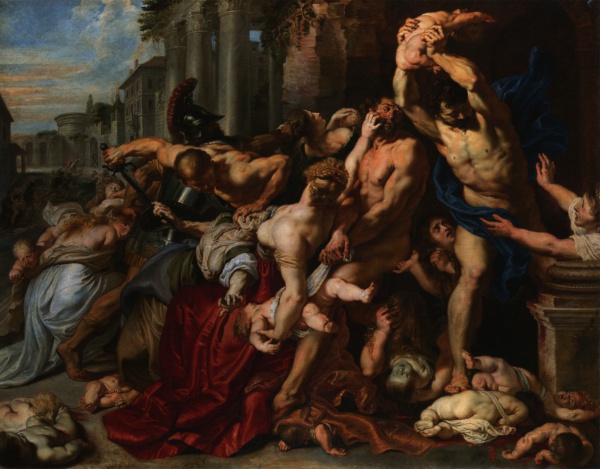Facts About Massacre of the Innocents (Rubens)
"The Massacre of the Innocents" is a powerful biblical scene masterfully brought to life by the renowned artist Peter Paul Rubens in two remarkable paintings. The first of these masterpieces, completed around 1611-12, was originally part of the prestigious Liechtenstein Collection in Vienna, Austria. After changing hands in 1920, it was sold at auction in 2002 to Canadian businessman Kenneth Thomson, who generously donated it to the Art Gallery of Ontario in Toronto.
Rubens' work vividly displays the dramatic flair and rich color palette typical of the Baroque period, a style he deeply admired. His time in Italy and his study of Baroque masters like Caravaggio significantly influenced his technique, particularly his use of chiaroscuro—the contrast between light and dark. Rubens was meticulous in his study of anatomy, often using écorché figures (representations of the human body with the skin removed to show muscles) to achieve lifelike portrayals in his art.
The painting's intense scenes not only reflect Rubens' artistic prowess but also resonate with the turbulent historical context of his native Antwerp. During this period, Antwerp was a Catholic stronghold amidst widespread religious conflict. This backdrop of turmoil and strife is palpable in the raw emotion and chaos depicted in the artwork.
Rubens revisited this harrowing theme later in his life, creating a second version of "The Massacre of the Innocents" which now resides in the Alte Pinakothek in Munich, Germany.

 United States
United States